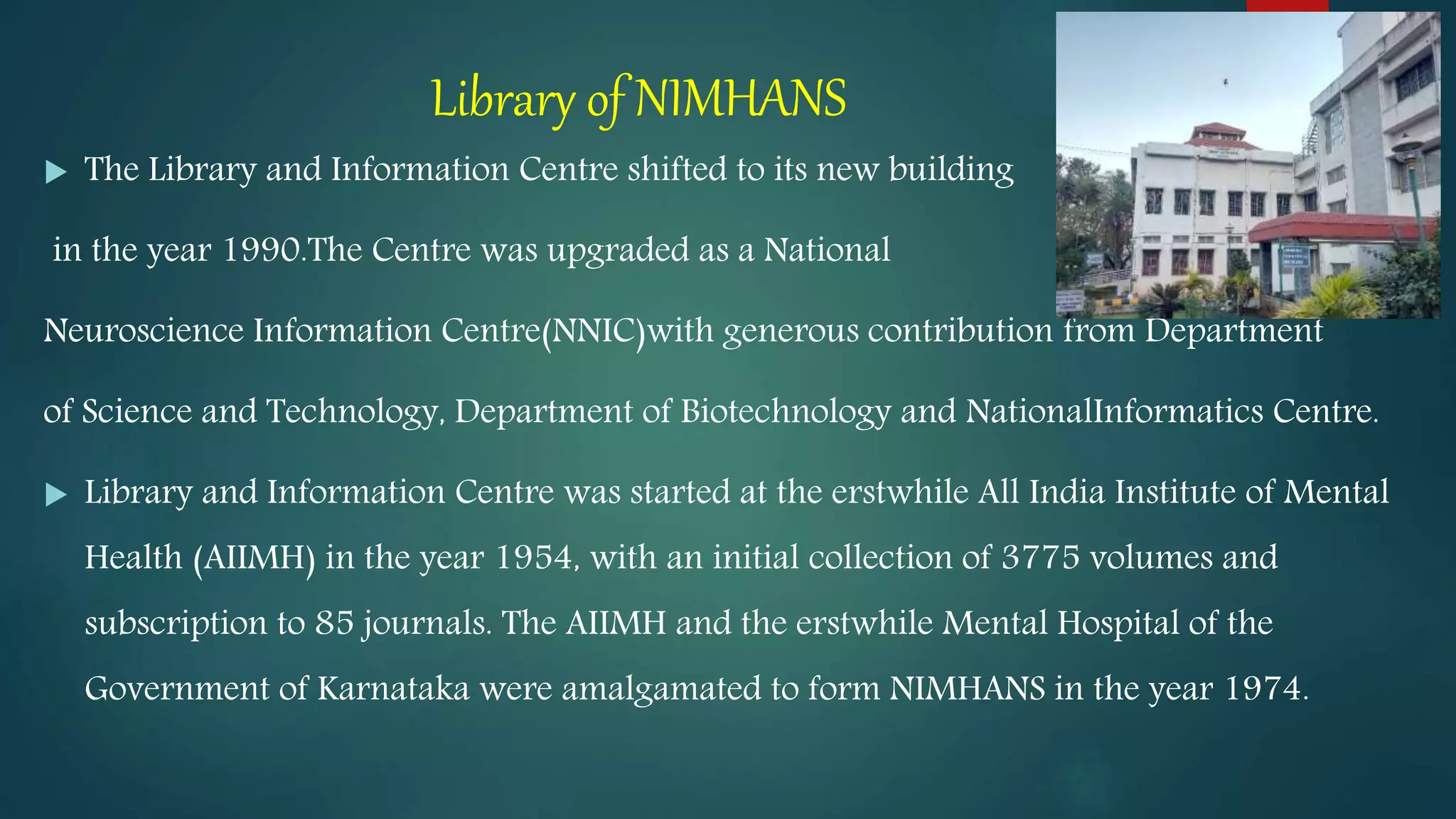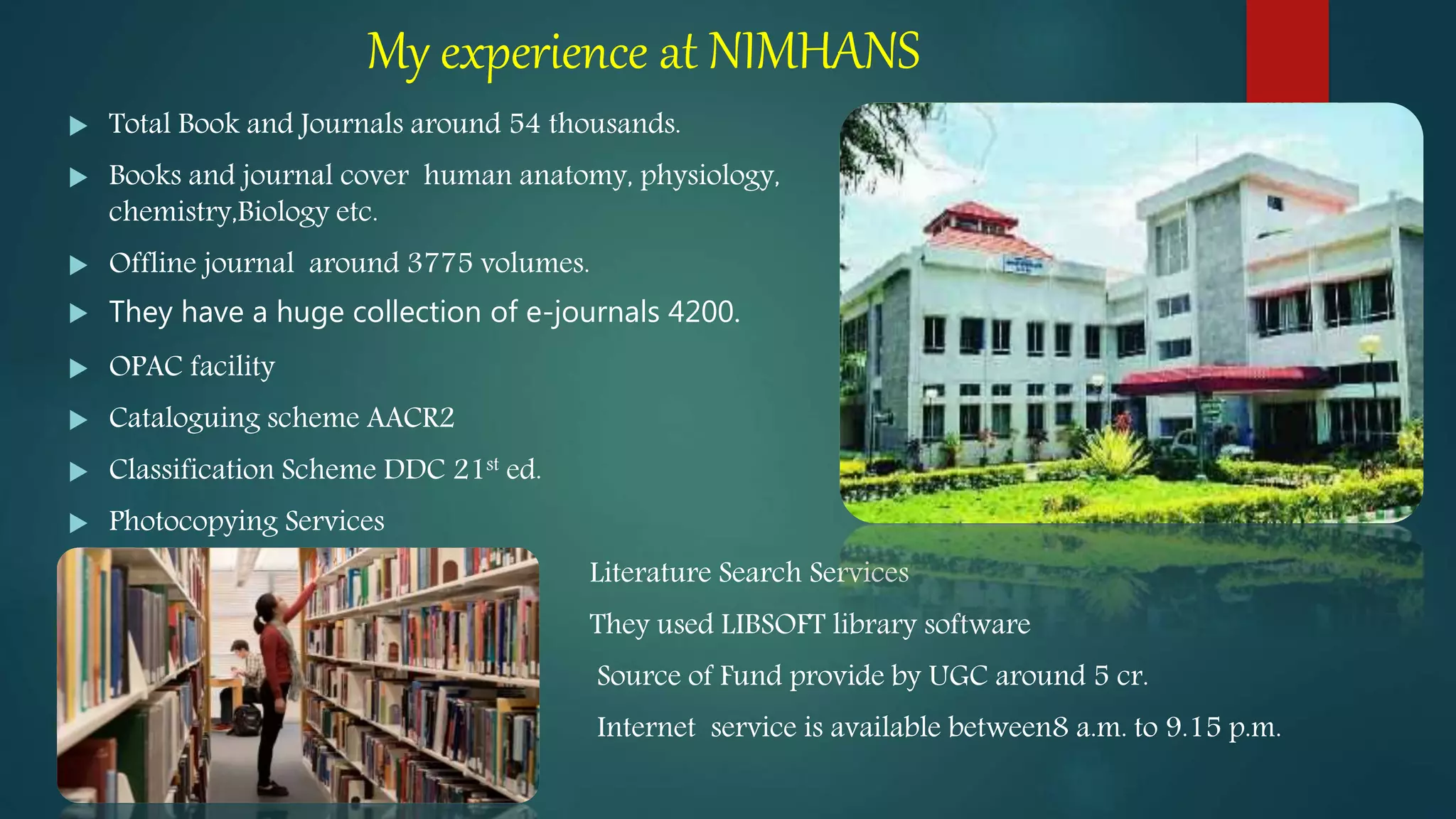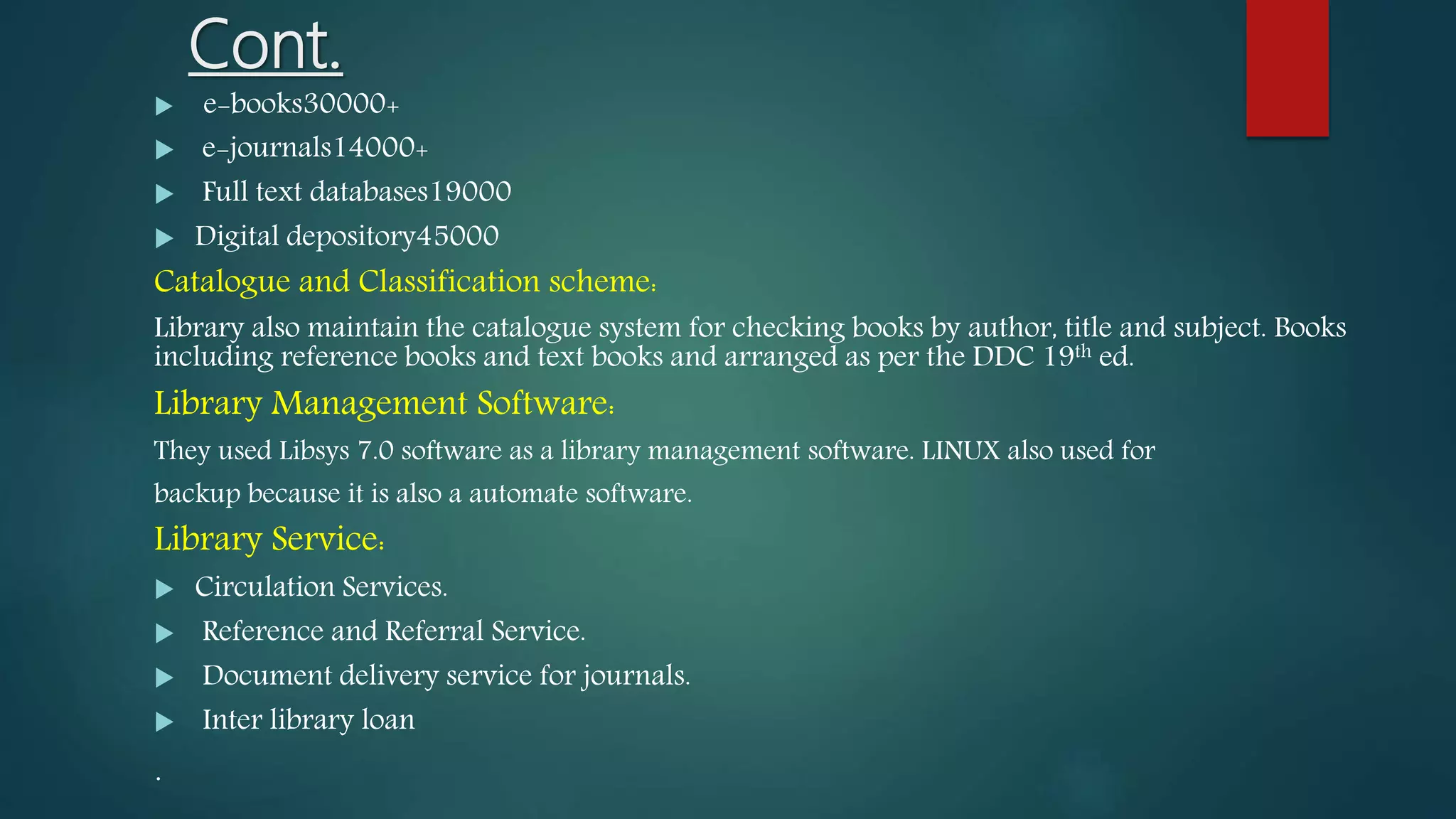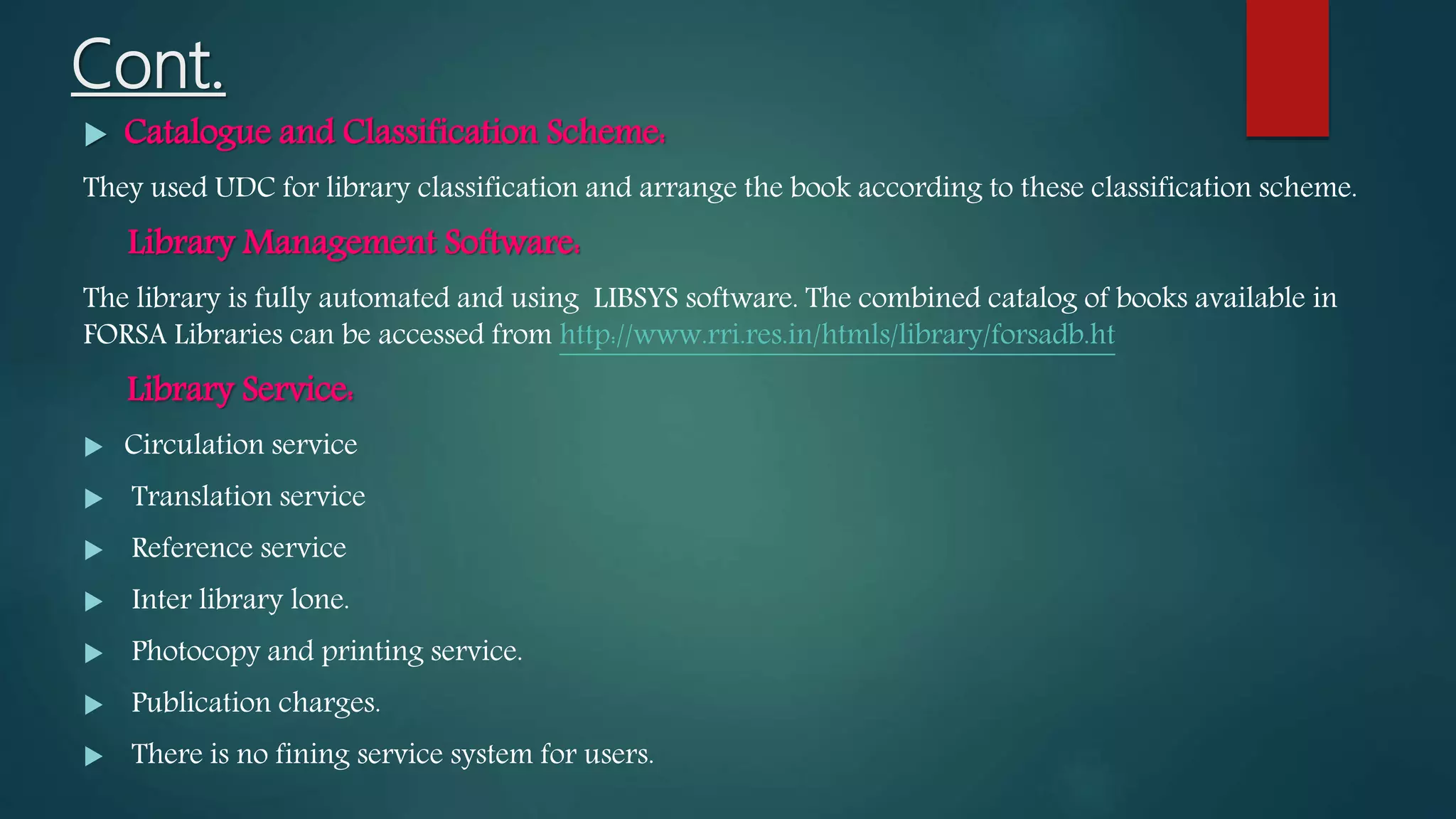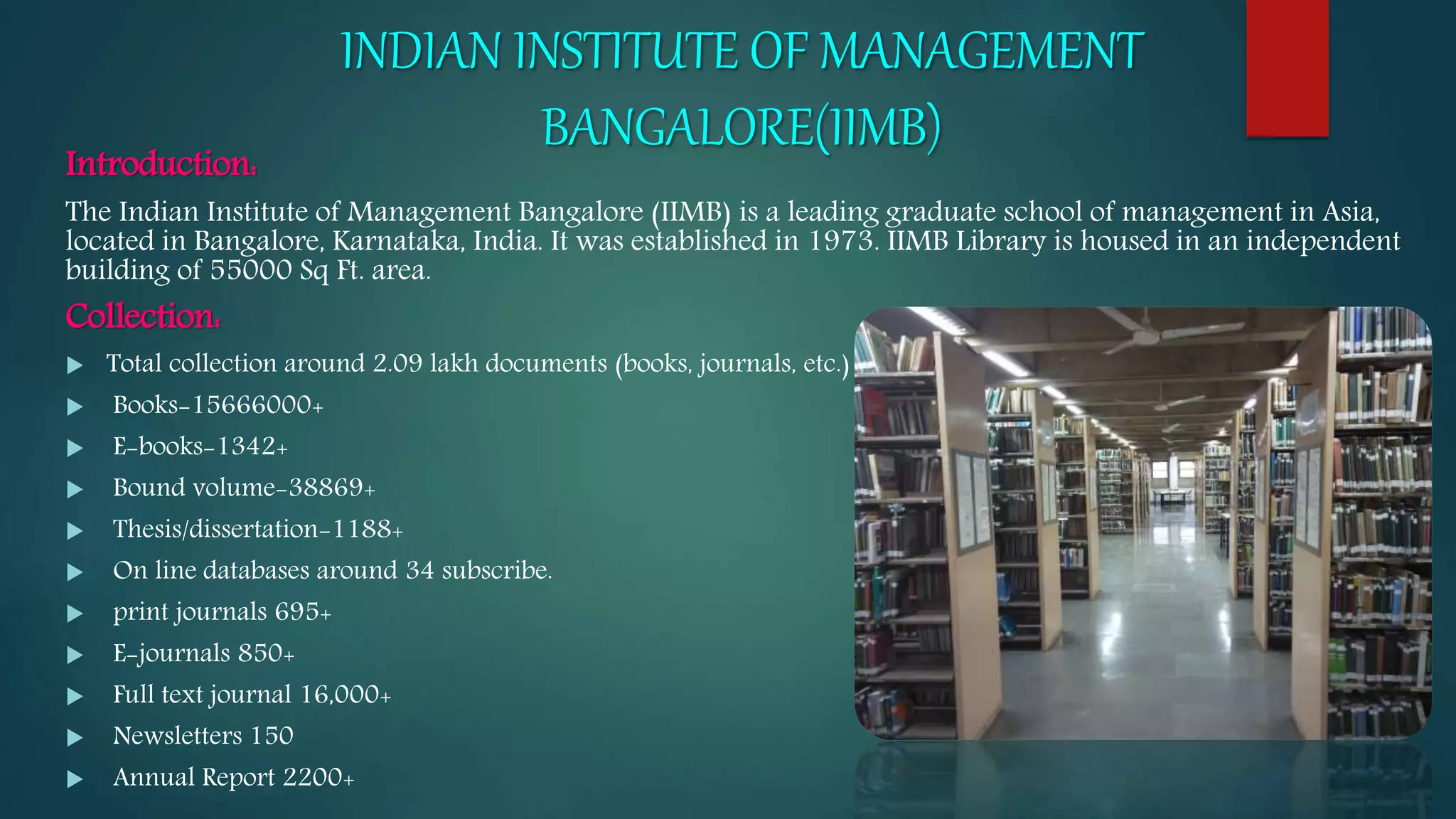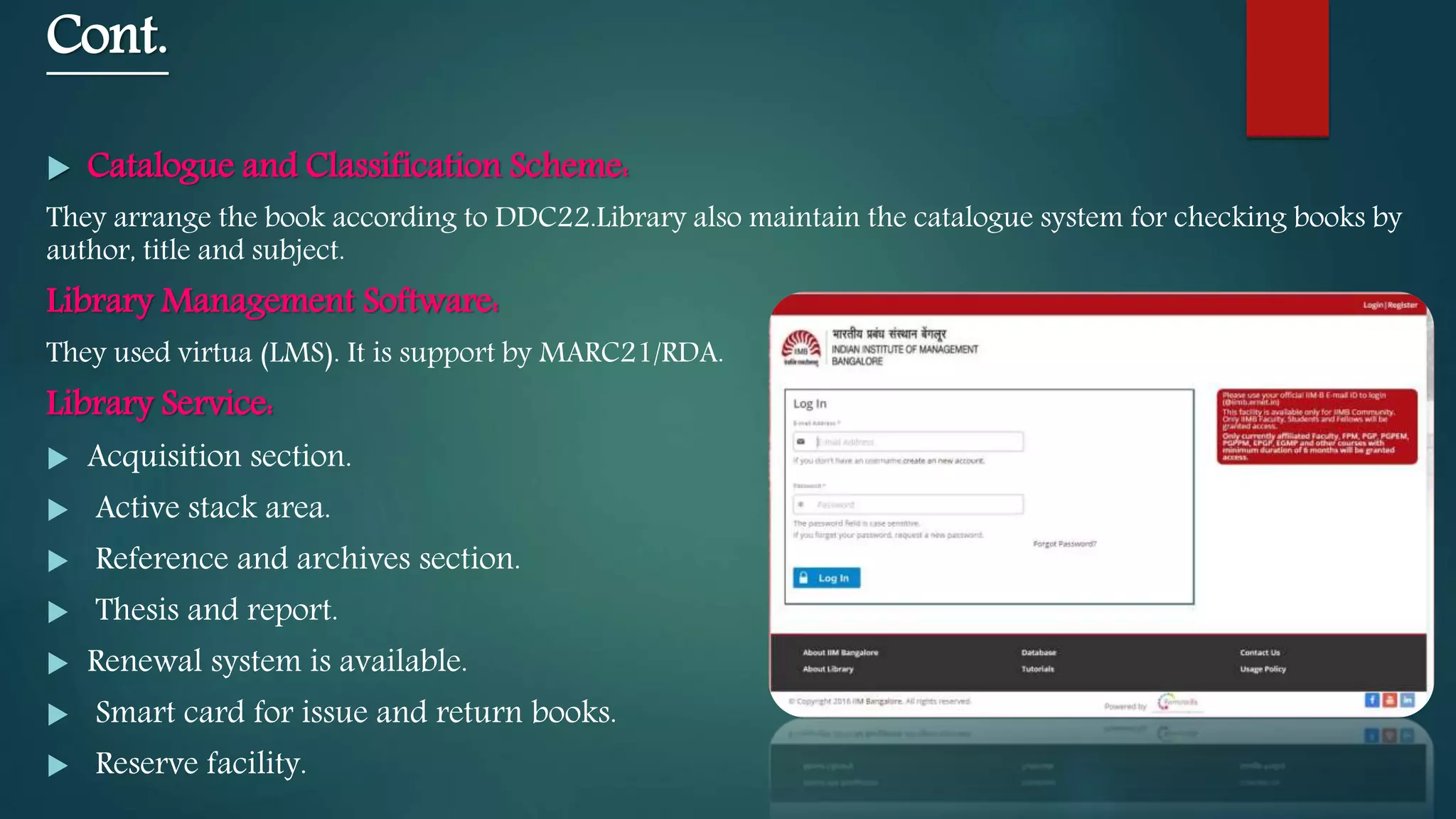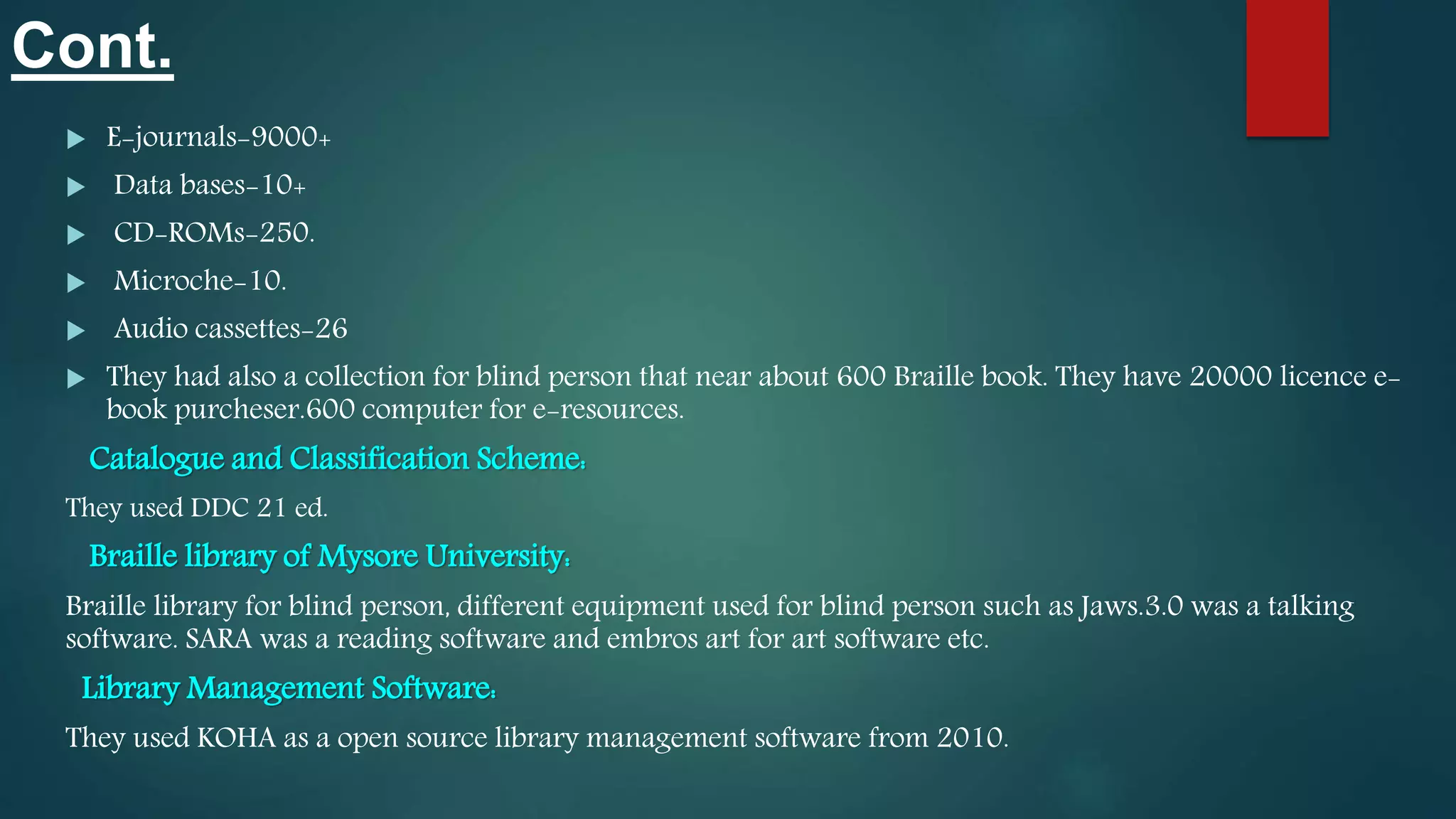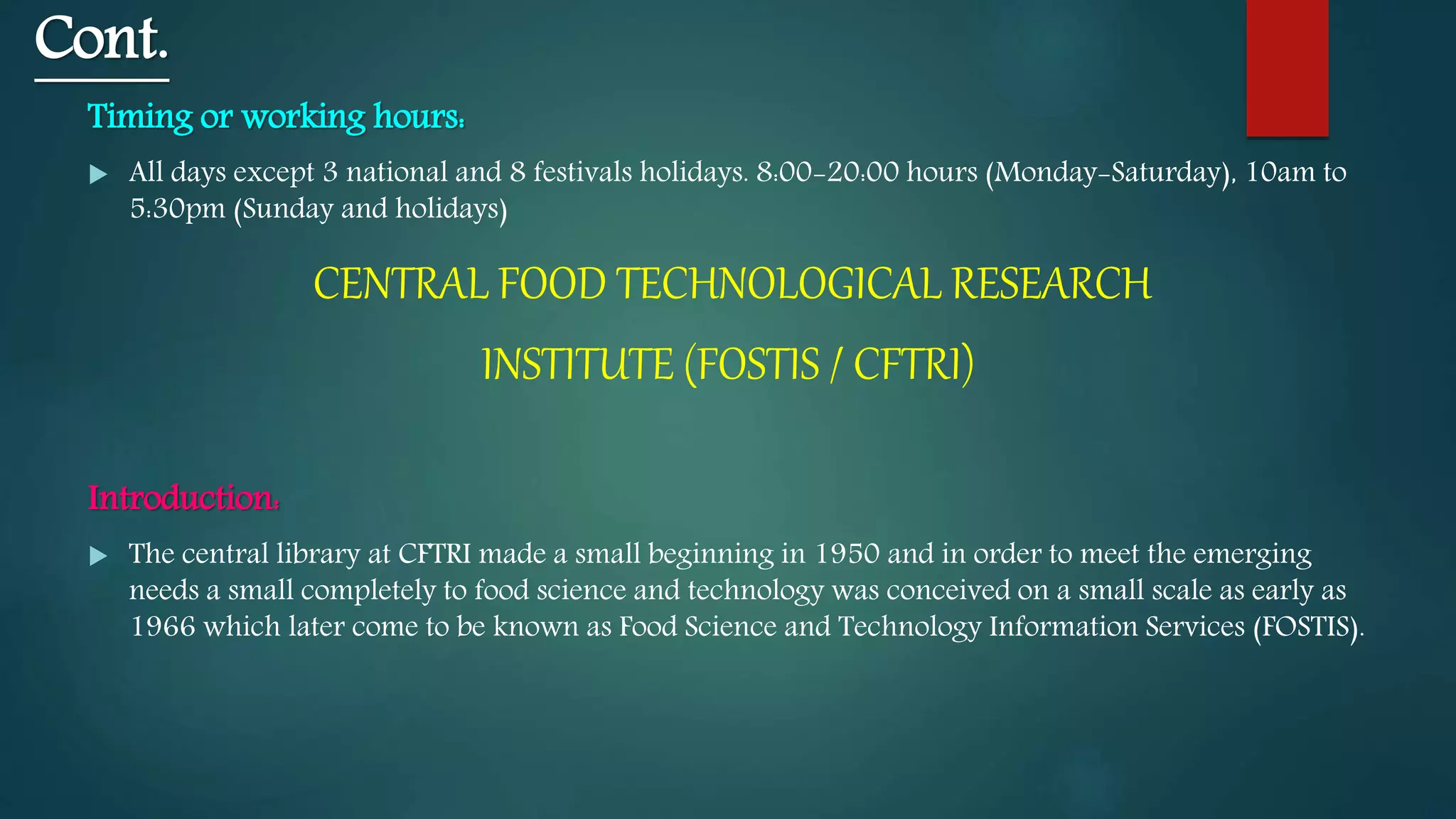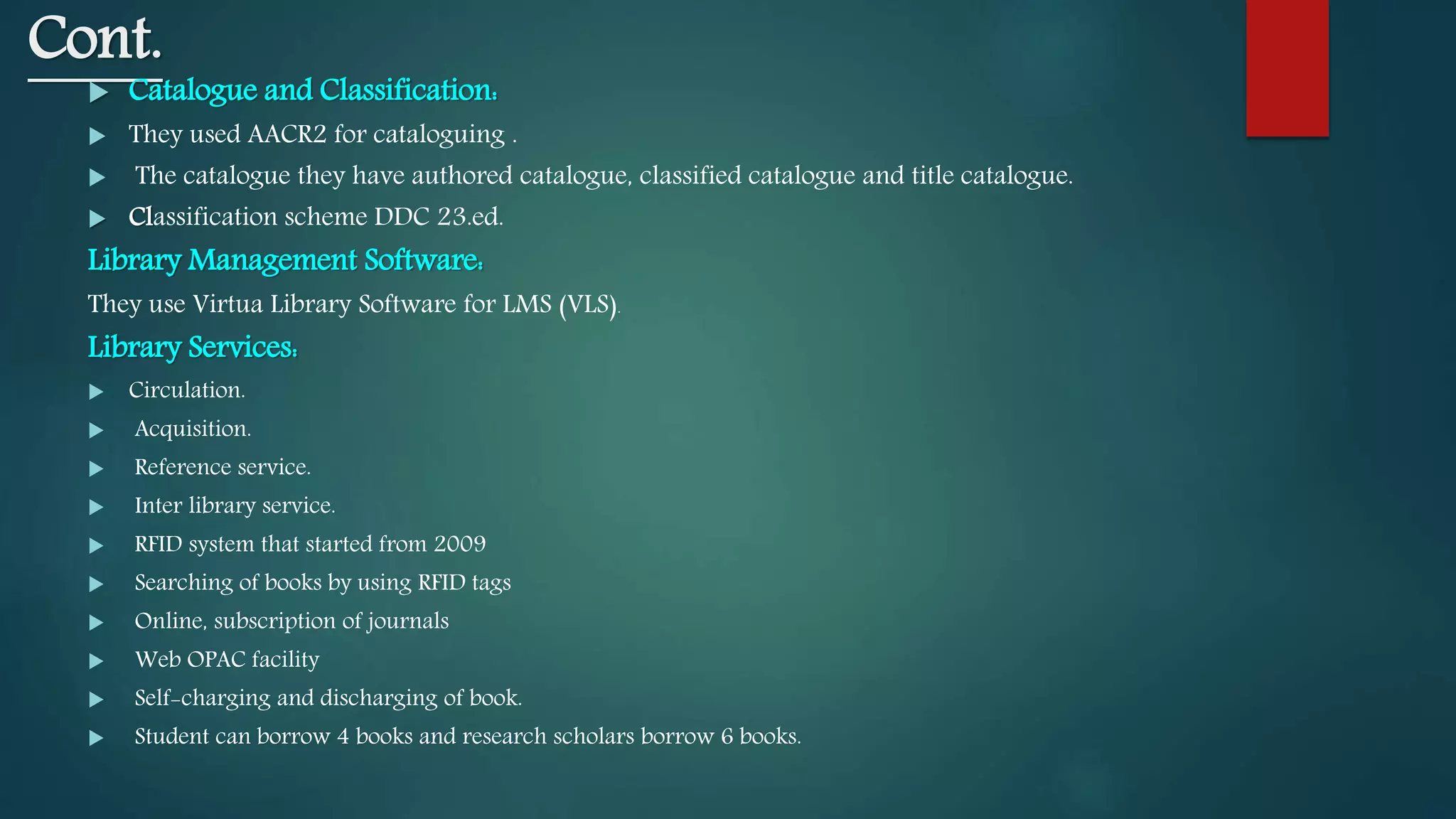The document details a field visit undertaken by students of the University of Calcutta's integrated MLIS program to various institutes and libraries in Bangalore and Mysore from February 22 to March 5, 2018. The visit aimed to enhance practical knowledge and experience in library science through interactions with different institutions, including NIMHANS, IISc, and the University of Mysore. Each library's collection, management practices, and user services were examined, with a focus on the resources available to support education and research.








